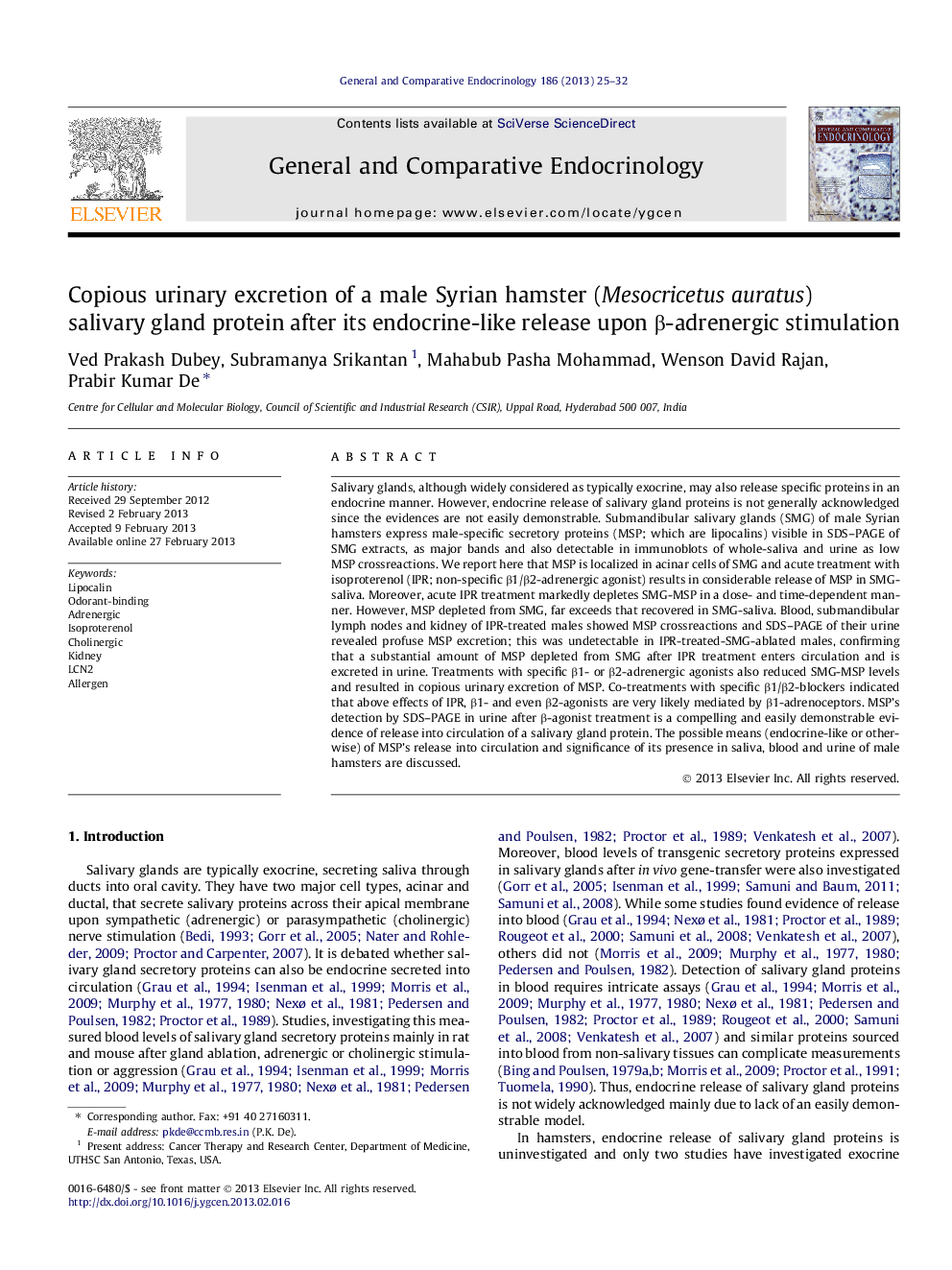| کد مقاله | کد نشریه | سال انتشار | مقاله انگلیسی | نسخه تمام متن |
|---|---|---|---|---|
| 5901465 | 1568919 | 2013 | 8 صفحه PDF | دانلود رایگان |

Salivary glands, although widely considered as typically exocrine, may also release specific proteins in an endocrine manner. However, endocrine release of salivary gland proteins is not generally acknowledged since the evidences are not easily demonstrable. Submandibular salivary glands (SMG) of male Syrian hamsters express male-specific secretory proteins (MSP; which are lipocalins) visible in SDS-PAGE of SMG extracts, as major bands and also detectable in immunoblots of whole-saliva and urine as low MSP crossreactions. We report here that MSP is localized in acinar cells of SMG and acute treatment with isoproterenol (IPR; non-specific β1/β2-adrenergic agonist) results in considerable release of MSP in SMG-saliva. Moreover, acute IPR treatment markedly depletes SMG-MSP in a dose- and time-dependent manner. However, MSP depleted from SMG, far exceeds that recovered in SMG-saliva. Blood, submandibular lymph nodes and kidney of IPR-treated males showed MSP crossreactions and SDS-PAGE of their urine revealed profuse MSP excretion; this was undetectable in IPR-treated-SMG-ablated males, confirming that a substantial amount of MSP depleted from SMG after IPR treatment enters circulation and is excreted in urine. Treatments with specific β1- or β2-adrenergic agonists also reduced SMG-MSP levels and resulted in copious urinary excretion of MSP. Co-treatments with specific β1/β2-blockers indicated that above effects of IPR, β1- and even β2-agonists are very likely mediated by β1-adrenoceptors. MSP's detection by SDS-PAGE in urine after β-agonist treatment is a compelling and easily demonstrable evidence of release into circulation of a salivary gland protein. The possible means (endocrine-like or otherwise) of MSP's release into circulation and significance of its presence in saliva, blood and urine of male hamsters are discussed.
⺠Submandibular gland male-specific protein (SMG-MSP) is localized in acinar cells. ⺠Acute β-agonist treatments of male hamsters rapidly and markedly depletes SMG-MSP. ⺠Copious release of MSP in urine and saliva is detectable after β-agonist treatment. ⺠MSP's urinary excretion is compelling evidence of endocrine-like release from SMG. ⺠MSP can be useful to study endocrine-like and exocrine release from salivary gland.
Journal: General and Comparative Endocrinology - Volume 186, 1 June 2013, Pages 25-32